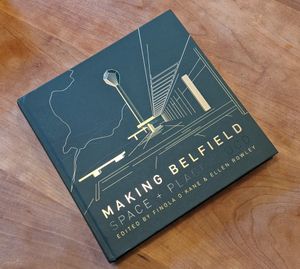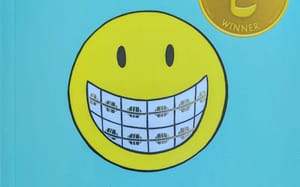Many of the pages in Worldcat Identities are for corporate authors, Ohio State University, for example.
It is interesting in these cases to see what the most widely held works about the institution in question are. Here are some examples from universities …..
So, the list of most widely held works about Ohio State University, maybe not unsurprisingly, has a strong football flavor. Quite a few universities have strong sporting coverage: see Indiana University, Bloomington, for example, or UCLA.
Thinking along these lines, I tried Notre Dame, only to discover that the list is dominated by mystery novels by Ralph McInerny.
Where an institution figures centrally in a popular work of fiction, it may not be surprising to see it in the list, although it might not be what immediately comes to mind. So, E.M. Forster‘s posthumously published Maurice is recorded as the most widely held work about the University of Cambridge. There are also two writers of mysteries set in Cambridge on the list: Jill Paton Walsh and Susanna Gregory. Trinity College Dublin‘s list is topped by The Ginger Man by J.P. Donleavy.
This prompted me to go looking for Inspector Morse in the University of Oxford page, but did not find him. The two books by John Bayley about his wife Iris Murdoch feature in the top four, as does a novel by Alan Hollinghurst, The line of beauty.
Maybe predictably, Humphrey Carpenter‘s book about the Inklings (Tolkein, Lewis and colleagues) is also in the Oxford top four. Cardinal Newman figures strongly in the University College Dublin list, which is headed by a book about Gerard Manley Hopkins, but interestingly Joyce does not figure. There are a couple of books about Condoleeza Rice in the top five at Stanford.
Gerard Manley Hopkins also figures in the entry for Gonzaga University, where again, perhaps unsurprisingly, sport leads, with basketball this time. In this case, the Hopkins presence reflects a strong historical collecting interest.
In some cases, particular events figure strongly near the top of the list as with the tragic shootings at Kent State University in 1970. Events and cultural change in the 60s are well represented in books about several universities, including Berkeley and Columbia.
Sometimes, the most widely held item might not be something that the institution would have chosen. E.P. Thompson‘s book on the University of Warwick is an example I came across. Two of the top five on MIT’s list are about the MIT students who famously went to Vegas.
And of course, histories of, or administrative materials about, the institution will often feature strongly, as with Lund, Bath, or Toronto for example. Similarly, a founder, president or other significant figure associated with the University may feature, as with Robert Maynard Hutchins and the University of Chicago.
In some cases, the contribution of the university in a longer historical perspective is the subject, as with Bologna, Leiden, or the Université de Paris.
I am not sure how much to take away from this superficial exploration, but here are a few random observations …
- Much depends on the vagaries of cataloguer/classifier activity.
- I was surprised not to find more scientists, although I did not look for very long (a book about Rutherford is on top of the list at Manchester). The absence of women was also notable; I did come across some cases where a discussion about the status of women featured, Oberlin and Cornell, for example.
- The web environment has made us very aware of how what is said by others about an institution is as readily available as what it says about itself. Maybe it was always thus, but less generally visibly? For many institutions, however, histories, lives of presidents, celebrations of various types, and other such materials were heavily represented. Just as, on the web, institutional materials will also feature strongly.
- I did not explore long enough or closely enough to develop a list of recurrent issues, but this would have been interesting (the influence of sports, the status of women in education, and unrest in the sixties were all examples that did surface).
- This is something of a time sink!
Note: Stylistic updates 10 November 2022. Paragraph about Gonzaga, summary note at top, and feature image all also added then. Of course, changes in collections may have affected the results if I repeated the searches today.




